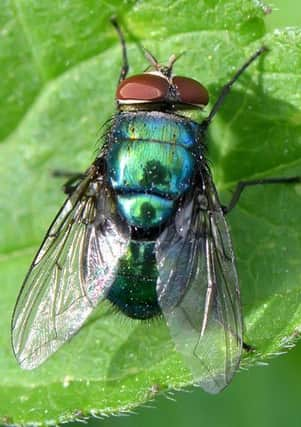Action needed to preventlivestock deaths on farms


Blowfly strike is caused by the infestation of sheep by fly maggots which feed directly on the skin of affected animals, resulting in serious stress and welfare problems and sometimes death.
Four shearling ewes and one lamb have been struck with blowfly on the Rye farm.
Advertisement
Hide AdAdvertisement
Hide AdThe farmer, who did not want to be named, says this was caused by the unseasonal wet weather we’ve had which has led to the flock eating wet grass. The grass affects the flock’s digestion leading to diarrhoea which the flies are attracted to.
In the UK, blowfly strike occurs on over 80 per cent of sheep farms. Experts have warned farmers that prevention is better than cure because once a strike has happened sheep can die very quickly.
Richard Wall, professor of Zoology at Bristol University explained: “Getting the timing right for treatment of ewes and lambs against blowfly strike can be extremely difficult - due to the unpredictability of the weather. When the weather warms up so does the incidence of blowfly strike. Larvae can mature in as little as 2 to 3 days after the eggs are deposited in the fleece of a susceptible sheep.
“Farmers may not realise that blowfly strike happens extremely quickly as adult females can immediately lay batches of about 200 eggs onto the fleece of a susceptible sheep. If an infestation is missed the reality is sheep can die within 1 – 2 weeks. Thankfully blowfly strike can be easily treated, avoiding the devastating impact an infestation can have on flocks.”
Advertisement
Hide AdAdvertisement
Hide AdThere are three species of blowfly which can affect sheep in the UK, with the greenbottle being the most common.
Blowfly larvae develop through three stages between egg and adult; it is within stages two and three that the larvae cause damage to sheep, known as blowfly strike, which can lead to production losses and welfare problems.
Sussex farmer Paul Griffiths , who has a flock of 3,800 sheep near Burgess Hill, said: “There has been a notable change in the blowfly strike season, especially over that past three years; the season will start earlier and go on for much longer than ever before. It has certainly forced our farming practice to become more flexible.
“We are noticing blowflies all the way into November, and as early as April. The industry is already in despair, trying to recover from the long cold winter and early spring freeze on top of lambing and calving, so although blowfly is not at the top of our agenda we know the necessity to prevent strike and avoid an additional hit to the flock.
Advertisement
Hide AdAdvertisement
Hide Ad“In some cases, where a blowfly protection plan is absent, costs would be astronomical following an outbreak of strike, we simply wouldn’t have the labour force to cope. An outbreak of strike would cost our farm around £30 per lamb and £40 - £50 for a ewe.”